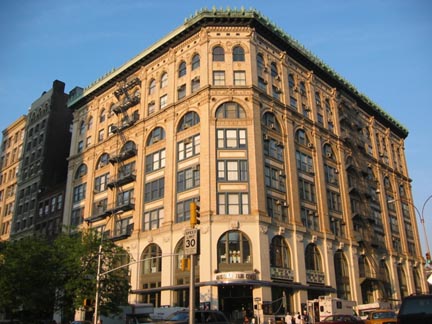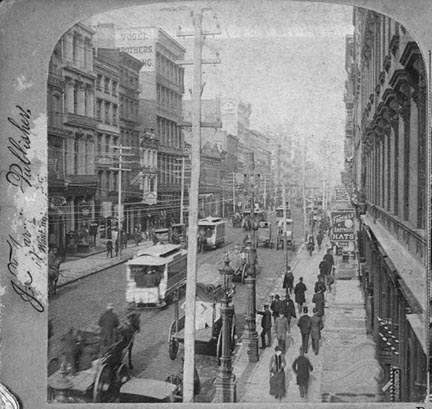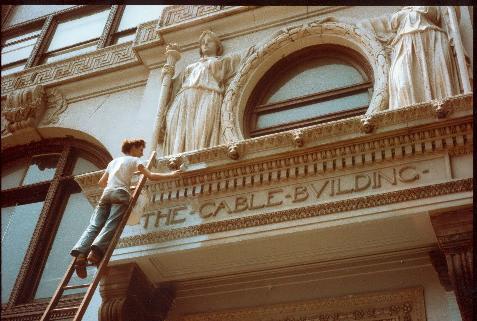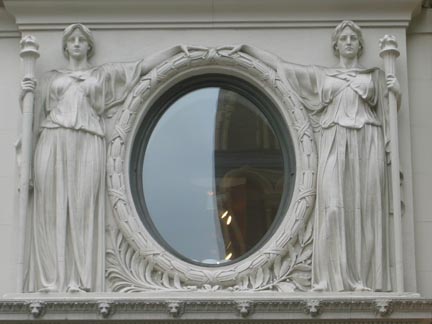 |
New York
Architecture Images-Greenwich Village Cable Building |
|
architect |
McKim, Mead and White |
|
location |
611 Broadway at Houston Street. |
|
date |
1894 |
|
style |
Beaux-Arts |
|
construction |
|
|
type |
Utility |
 |
|
|
|
 |
|
images |
  |
|
|
  |
|
notes |
611-621
Broadway, on the North West corner of Houston Street, facing Houston Street
to Mercer Street was designed by the famous McKim, Mead and White firm in
1892. The building is a 9 story 200' by 100' 129' tall structure which was
the power plant for the Metropolitan Street Railway Co. / Metropolitan
Traction Co. ( Cable car) line on Broadway. Formerly the site of St Thomas Church which burned down in 1851, was rebuilt and then demolished circa 1890. I have a copy of an 1894 Scribners magazine article on this railway and a Scientific American issue from 1897, with photos and line cuts. I also have several stereo view cards I scanned, one from 1894 and I have one from before the Cable Building was built- St Thomas Church can just about be made out in the distance- both taken from a block South on Broadway at the Metropolitan Hotel. Thus far I have not found one photo or even one article about the actual construction of the BUILDING and I find that very unusual given it was a McKim, Mead and White design, it was a main power plant for a then very new mode of transportation, and the building itself had to have it's foundations dug to an unusual depth- 40 feet in order to isolate the heavy vibrating machinery from the office building itself. It had (4) 1,000 Horse Power steam engines and 18 boilers in the basement, the engines had a 32 foot diameter driving drum and was the largest steam powered plant of it's kind. http://www.lostnewyorkcity.com/buildingphotos/Plate-51-b.html
|
The RepublicanHamilton Ohio Monday, December 5,1892 The Broadway Cable Road. Two years is a long time in the busy life
of the metropolis to be occupied in the work of constructing and putting
into operation a single line of cable railway, but this is what now
seems certain to be the fact about the Broadway cable road. But the railroad company has only begun its
work with the completion of the roadway, and for a year past they have
been constructing the necessary power stations along the line of the
road, and this work has progressed in a painfully slow fashion.
Meanwhile, horses drag the cars over the rails with exasperating
slowness, as in former years. It must be confessed that in the matter of street railway travel, New York is far behind the age. Even in Philadelphia, whose slowness and conservative motions are proverbial, can give New York points about rapid transit on surface lines while many small western cities, whose population does not exceed that of a single ward in this city, display a spirit of enterprise in public improvement, which we might imitate with profit. Kirke White. with special thanks to Randall |
|